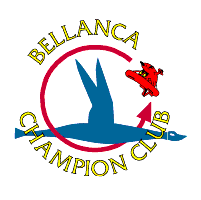I Ryan,
This is my second post in here, so I hope I have the blessing of the other members to make a reply of it 8)
While any plane can be used in any kind of work (if you have the money, you can attach a towing hook to a Jumbo; THAT´d be spectacular on the beaches... :roll: maybe by next summer), there are, of course, tasks that each model can comply with better than with some others.
Let me guess on this one and make someone with his own experience come and correct me (please).
The Super D has the power to tow a regular banner, but then, it has the wrong wing. That means that to fly around the 60 knots you´ll need a higher AOA than on, say, a Scout. That greater AOA means two things itself: you´ll have more drag to fight using engine´s power and an air intake not designed to cool it down in that attitude. These two facts have, again, another two meanings. One, you´ll be using some more power. Two, you´ll have a much worse/weak air circulation around the cylinders.
One needs a 50mm cannon to break a Lyco 360, yes, but that´s only a way to talk. If towing doesn´t make any good to the engines, adding some other factors like those doesn´t help to keep ´em healthy.
I´m sure any other Citabria-like model, excepting for the little 7ECA, would comply with it better.
That said, 180HP on that tiny and light airframe are a lot of HP´s!! Cessnas 172 with 160HP are towing out there, with a bigger frontal section, bigger wings, more weight and a smaller engine. They do pretty well, so a Super D shouldn´t be that bad; just tow at 65 knots. The banner will last a few less hours, but the engine will last a few more.

About the pictures, I have like one million from a Citabria, and they all show some part of the airframe. Then, those were the classical "family" pictures, so I guess if you find the clear space, the path to "attack" the objetive and the position inside the cockpit...
Teaching people to fly a taildragger in one. From what I´ve seen, they can be easier to fly than a Cub, but I guess it depends on the student too. I found it more sensitive at the controls than the Cub, faster, more precise. While the newbee tends to over control the taildraggers (first meters on take off and last on landing) during his first hours, a slower response to the control inputs that could seem good, can turn in bad stuff. As the student won´t see the plane obeying, he will push harder, and all that input will come together. He´ll try to re-correct, will push the other way... won´t see anything, will push harder and by that time it all will come together again. Will try to correct... If the controls are faster, but not faster Sukhoi style, this reaction can be partialy solved.
Now, everyone out there with 1/2 hour on a Super D, please, come and correct all this mess!
Hope I confused you

Jose
